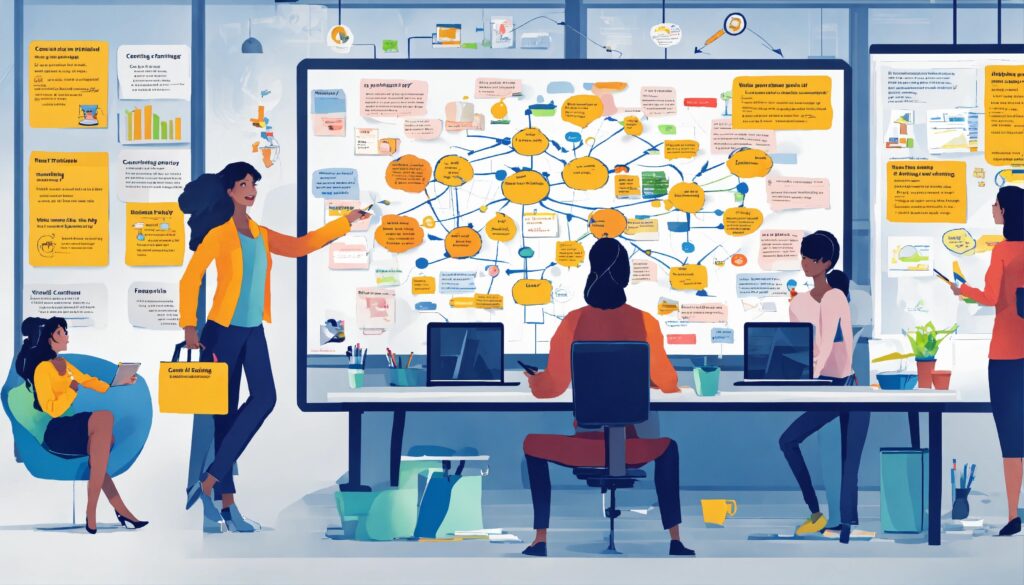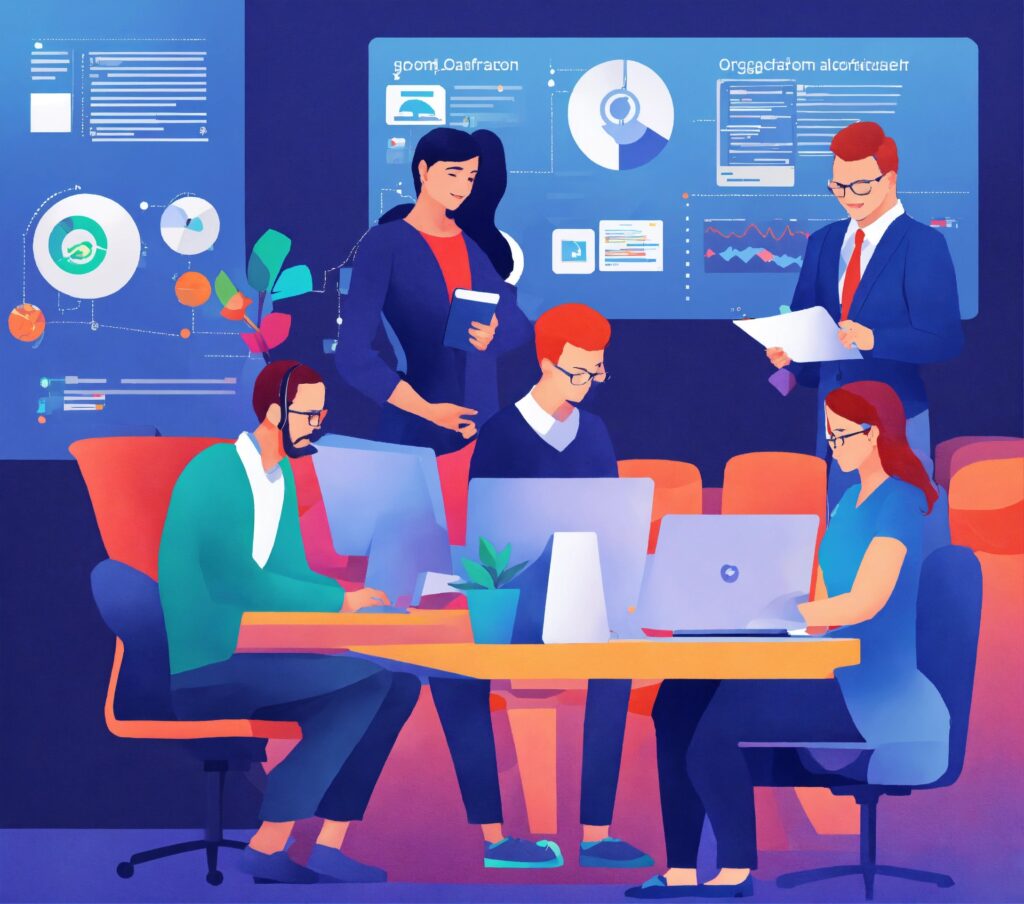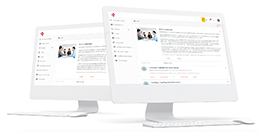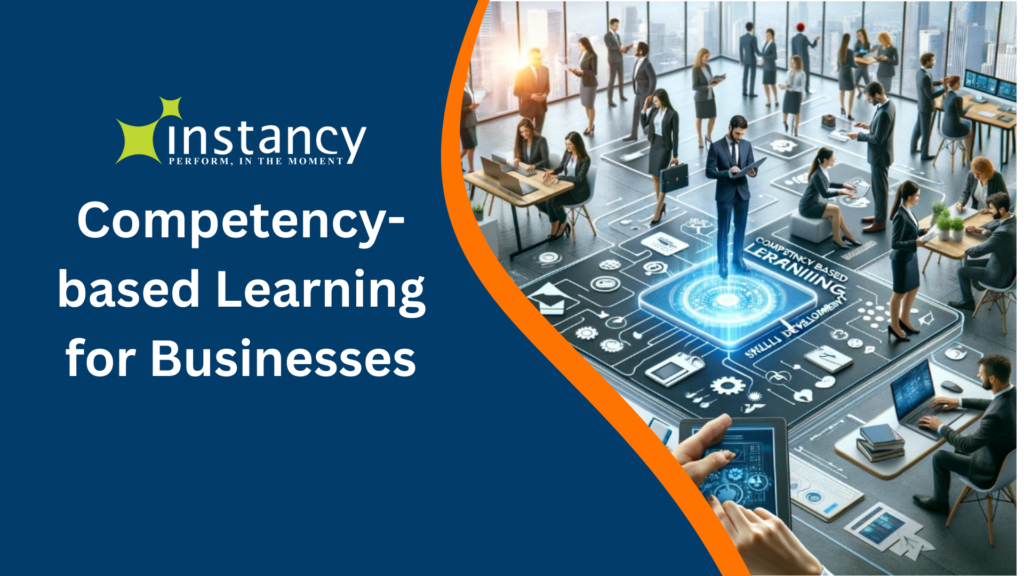Introduction:
In today’s fast-paced business world, competency-based learning has emerged as a powerful tool for driving organizational success. This innovative approach focuses on developing specific skills and knowledge directly relevant to an individual’s role within a company. By tailoring learning experiences to employees’ unique needs, organizations can unlock their full potential and achieve sustainable growth.
Competency-based learning is not just a buzzword; it is a strategic investment in organizational development and employee empowerment. By aligning training programs with the skills and competencies required for success in a particular role, companies can create an agile, adaptable, and highly skilled workforce. This, in turn, leads to improved performance, increased productivity, and a competitive edge in the market.
In this blog post, we will delve deeper into competency-based learning in a business context. Here’s what you can expect to learn:
– The fundamentals of competency-based learning and how it differs from traditional training methods
– The benefits of competency-based learning for both organizations and employees
– Strategies for implementing a successful competency-based learning program in your company
– Real-world examples of companies that have leveraged competency-based learning to drive success
Get ready to explore the transformative power of competency-based learning and discover how it can revolutionize the way your organization approaches employee development and growth. Let’s dive in!
Understanding Competency-based Learning in Business

Competency-based learning in a business environment is a strategic approach that focuses on mastering specific skills and knowledge rather than just completing a set curriculum. By tailoring learning objectives to individual competencies, this method ensures that employees acquire the exact skills needed to excel in their roles. Here’s a closer look at the key aspects of competency-based learning:
Definition and Key Principles:
– Competency-based learning revolves around identifying the essential skills and knowledge required for a particular job role.
– It emphasizes personalized learning paths based on individual strengths and weaknesses.
– Progress is measured by mastering competencies rather than traditional grades or completion of courses.
Benefits of Implementing Competency-based Learning:
– Enhanced employee engagement and motivation as they see direct relevance to their roles.
– Improved performance and productivity due to targeted skill development.
– Better alignment between employee skills and business objectives.
– Increased flexibility and adaptability to changing business needs.
Examples of Enhancing Employee Performance:
– A sales team undergoing competency-based training to improve negotiation skills, leading to increased deal closures.
– Customer service representatives receiving targeted training on empathy and problem-solving, resulting in higher customer satisfaction rates.
– Managers developing leadership competencies to effectively lead their teams through challenges and changes.
Competency-based learning offers a dynamic and effective way to upskill employees, drive performance improvements, and align individual development with organizational goals.
Developing Competency Frameworks for Business Success

In the dynamic landscape of modern businesses, having a well-defined competency framework is crucial for achieving success. Let’s delve into the essential steps involved in creating a competency framework that can propel your business forward, aligning it with organizational goals and values, and effectively implementing and communicating it to your employees.
Steps to Create a Competency Framework:
- Identify Core Competencies: Identify the key competencies required for various roles within your organization.
- Gather Input: Collaborate with managers, employees, and stakeholders to gather insights on the skills and behaviors necessary for success.
- Define Levels of Proficiency: Establish different proficiency levels for each competency to provide a clear progression path.
- Map Competencies to Roles: Match the identified competencies with specific roles to ensure alignment with job requirements.
- Continuous Refinement: Regularly review and update the competency framework to adapt to changing business needs.
Aligning with Organizational Goals and Values:
– By aligning your competency framework with the overarching goals and values of your organization, you ensure that employees’ skills and behaviors contribute directly to the company’s success.
– This alignment fosters a cohesive organizational culture and enhances employee engagement and performance.
Implementing and Communicating Effectively:
– To implement the competency framework effectively, provide training and resources to help employees understand and develop the required competencies.
– Communicate the framework clearly to all employees, emphasizing its importance and relevance to their roles.
– Encourage ongoing feedback and discussions to support employees’ competency development journey.
By following these steps and aligning your competency framework with your organization’s goals and values, you can empower your employees to excel and drive business success.
Implementing Competency-based Assessment Strategies

Assessing employee competencies is a crucial aspect of talent management in any organization. By implementing competency-based assessment strategies, businesses can effectively evaluate their workforce’s skills and knowledge to drive performance and growth. Let’s delve into some key points on how to carry out competency assessments in the workplace successfully:
Different Methods and Tools for Assessing Competencies:
– Utilize a variety of assessment methods such as self-assessments, peer reviews, and manager evaluations to gain a comprehensive understanding of an employee’s competencies.
– Incorporate tools like competency frameworks and assessment software to streamline the assessment process and ensure consistency.
Best Practices for Conducting Competency Assessments and Providing Feedback:
– Clearly communicate the purpose and expectations of the assessment to employees to ensure transparency and cooperation.
– Provide constructive feedback highlighting strengths and areas for improvement, fostering employee development and engagement.
How to Use Assessment Results to Identify Skill Gaps and Tailor Training Programs:
– Analyze assessment results to pinpoint skill gaps within the organization and individual teams.
– Tailor training and development programs to address identified skill gaps, ensuring employees receive targeted support to enhance their competencies.
By following these best practices and leveraging assessment results effectively, organizations can optimize their talent management processes and empower employees to reach their full potential.
Evaluating Competency-based Learning Outcomes in Business

In the fast-paced business world, staying ahead of the curve is essential. This is where competency-based learning comes into play, offering a strategic approach to employee development focusing on specific skills and knowledge. But how do you know if these initiatives are truly effective? Let’s delve into the importance of evaluating competency-based learning outcomes in the business world.
Importance of Measuring Effectiveness:
Measuring the effectiveness of competency-based learning initiatives is crucial for several reasons:
– It allows organizations to assess the impact of their investment in employee development.
– It provides valuable insights into the strengths and weaknesses of the current learning programs.
– It helps identify areas for improvement and optimization.
Key Performance Indicators
To evaluate learning outcomes and employee development effectively, organizations can consider the following key performance indicators:
– Employee performance improvements.
– Skill acquisition and application.
– Employee engagement and satisfaction levels.
– Return on investment in training programs.
Strategies for Continuous Improvement
Once the evaluation results are in, it’s time to strategize for continuous improvement:
– Analyze the data to identify trends and patterns.
– Gather feedback from employees and trainers.
– Implement targeted training interventions based on evaluation findings.
– Monitor progress and make adjustments as needed.
By consistently evaluating and improving competency-based learning outcomes, businesses can ensure that their workforce remains agile, skilled, and ready to tackle the challenges of tomorrow.
Integrating Competency-based Learning into Talent Development

Competency-based learning is a powerful tool that can revolutionize talent development within organizations. By integrating this approach into talent management and succession planning strategies, companies can unlock a wealth of benefits that drive both individual and organizational growth.
One key advantage of linking competency development with career progression is the ability to align employee skills with business objectives. This ensures that employees have the competencies needed to excel in their current roles and prepare for future responsibilities. As a result, organizations can cultivate a workforce that is agile, adaptable, and ready to tackle evolving challenges.
Moreover, integrating competency-based learning into talent development programs can significantly boost employee engagement. When employees see a clear path for skill development and career advancement, they are more motivated to invest in their own growth. This leads to higher levels of job satisfaction, increased productivity, and lower turnover rates.
To highlight the significance of competency-based learning in talent development, it’s crucial to understand the transformative effects it has across various sectors. Organizations that have embraced this approach report noteworthy outcomes, such as enhanced employee retention rates and improved overall performance. Specifically, some companies have observed up to a 20% increase in retention within the first year of implementation. This is indicative of a deeper engagement and a more fulfilling career path for employees. Similarly, aligning competencies with career advancement opportunities has led to measurable improvements in employee performance, with some entities recording a 15% uptick. These successes underscore the value of a competency-based framework in cultivating a skilled, motivated, and committed workforce.
These success stories underscore the transformative potential of integrating competency-based learning into talent development initiatives. By prioritizing skill development and career growth, organizations can create a culture of continuous learning and excellence that propels both individuals and the company forward.
Adapting Competency Models for Organizational Growth

In the fast-paced world of business, staying ahead means constantly evolving and adapting. This holds especially true for competency models, which serve as the backbone for organizational growth and success. Let’s delve into how companies can effectively update their competency models to keep up with the ever-changing landscape.
Strategies for updating and evolving competency models:
– Conduct regular assessments to identify gaps and areas for improvement.
– Engage employees at all levels to gather feedback and insights on skill requirements.
– Align competency models with the organization’s strategic goals and objectives.
– Provide continuous training and development opportunities to bridge skill gaps.
Challenges and considerations for adapting competency models:
– Resistance to change from employees comfortable with the existing model.
– Balancing the need for innovation with maintaining core competencies.
– Ensuring alignment with changing industry trends and technologies.
– Managing the complexity of integrating new competencies while phasing out outdated ones.
Examples of organizations that have successfully adapted their competency models:
– Company X revamped its competency model to focus on digital skills, leading to increased efficiency and competitiveness in the market.
– Organization Y implemented a mentorship program to help employees develop new competencies, resulting in higher employee satisfaction and retention rates.
– Company Z restructured its competency model to emphasize collaboration and adaptability, driving innovation and growth within the company.
By embracing change, soliciting feedback, and aligning competencies with strategic goals, organizations can effectively adapt their competency models to foster growth and innovation in today’s dynamic business environment.
Measuring ROI of Competency-based Learning Programs in Business

Competency-based learning programs have become a cornerstone in business education, offering a structured approach to skill development and employee growth. However, understanding these programs’ return on investment (ROI) is crucial for organizations looking to justify their implementation and measure their impact effectively.
When it comes to calculating the ROI of competency-based learning programs, there are several methods that businesses can employ:
– Cost-Benefit Analysis: This method involves comparing the costs of implementing the program with the benefits it brings regarding improved performance and productivity.
– ROI Formula: A simple ROI formula [(Net Benefits / Costs) x 100] can provide a clear percentage that showcases the program’s effectiveness in financial terms.
– Benchmarking: Comparing the program’s outcomes with industry standards or previous performance metrics can offer valuable insights into its success.
In assessing the financial impact of competency development on business performance, there are key factors to consider:
– Employee Productivity: How much has productivity increased due to the program?
– Cost Savings: Have there been any cost savings due to reduced turnover or improved efficiency?
– Revenue Growth: Has the program contributed to revenue growth through enhanced skills and performance?
To illustrate the tangible benefits and ROI of competency-based learning initiatives, case studies can provide real-world examples of success stories. These studies showcase how organizations have seen significant improvements in employee performance, engagement, and overall business outcomes as a direct result of investing in competency-based learning programs.
Conclusion

In wrapping up our discussion on competency-based learning for business, let’s quickly recap the key takeaways that can truly transform the way organizations approach skill development:
– Personalized Learning: By focusing on individual competencies, businesses can tailor learning experiences to meet the specific needs of each employee, leading to more effective skill acquisition.
– Measurable Outcomes: Competency-based learning allows for clear and measurable assessment of skills, providing employees and employers with a transparent view of progress and areas for improvement.
– Adaptability and Agility: Embracing a competency-based approach enables businesses to stay agile in a rapidly changing market by quickly adapting to new skill requirements and industry trends.
As we navigate through an increasingly competitive business landscape, it’s crucial to emphasize the significance of continuous learning and skill development. In a world where the only constant is change, those who are proactive in upskilling and reskilling will undoubtedly have a competitive edge. Remember, investing in your employees’ growth is investing in the future success of your business.
So, here’s a call to action for all our readers: Start implementing competency-based learning strategies in your organizations today. Whether you’re a small startup or a large corporation, embracing a culture of continuous learning will not only benefit your employees on an individual level but will also drive innovation and success for your business as a whole. Let’s embark on this learning journey together and pave the way for a brighter, more skillful future!
Instancy’s Competency-Based Learning System represents a significant leap forward in how businesses approach their employees’ upskilling and reskilling. Tailored to meet the specific needs of various job roles and competency requirements, this innovative platform leverages the power of generative AI to automate the development of job roles, competencies, and skill descriptions. By integrating AI throughout its framework, Instancy ensures that learning objectives and resources are perfectly aligned with the skills employees need to thrive in their current positions and advance in their careers. Moreover, the system’s AI-driven recommendations personalize the learning experience, catering to each learner’s job role and future aspirations, thus fostering a more engaged and efficiently skilled workforce.
We invite you to experience the transformative impact of Instancy’s Competency-Based Learning System firsthand by signing up for a free trial https://www.instancy.com/contact-us/. Discover how our platform can streamline your talent development process, making it more efficient and aligned with your organizational goals. Whether you’re looking to enhance employee performance, boost retention, or prepare your workforce for future challenges, Instancy provides the tools and insights you need to succeed. Start your journey towards a more competent and prepared team today, and unlock the full potential of your employees with the cutting-edge solutions Instancy offers.




